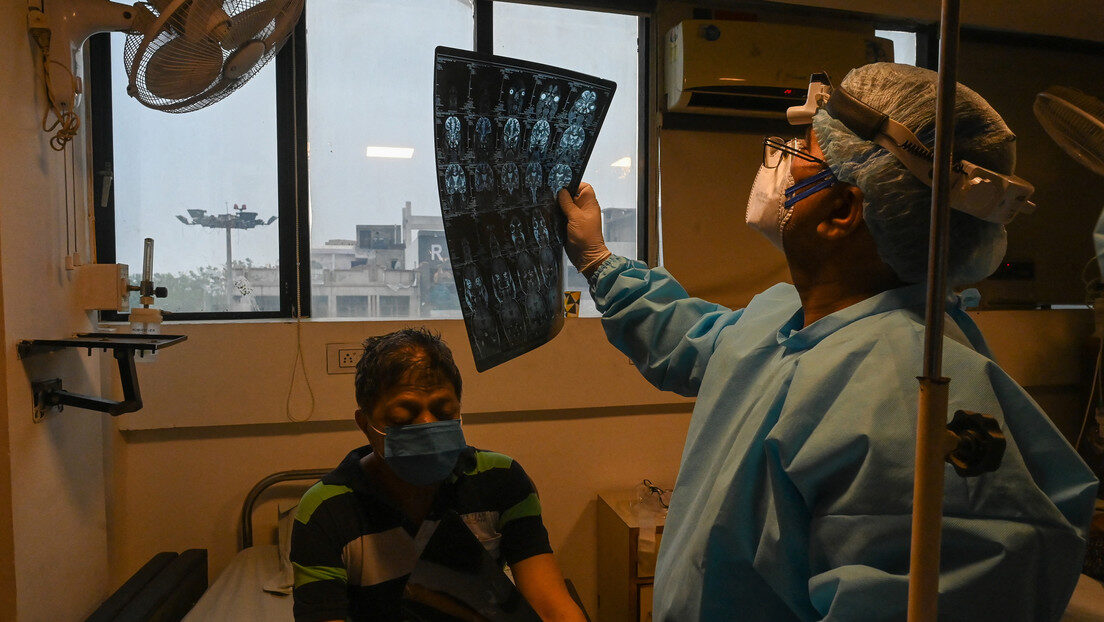"Happiness cannot be traveled to, owned, earned, worn or consumed. Happiness is the spiritual experience of living every minute with love, grace, and gratitude.India has a total population of 1.39 billion people. That is 18 percent of the total world population. The median annual per capita income is $616. Hundreds of millions of people in India survive with a hand to mouth existence.
- Denis Waitley
They work and earn a couple of dollars, and eat once they have earned the money. India has little or no social welfare system. For many people, if they don't work and earn, they don't eat.
In 2020, India reported 148,738 deaths due to the coronavirus. That equates to 0.01% of the population. The average death rate in India in 2020 was 7.25 in 1000 of the population.
That means over 10 million people died in India in 2020, and only 1.5% were coronavirus deaths.
And that is assuming that the 148,738 coronavirus deaths reported were actually caused by coronavirus. The WHO guidelines for reporting deaths do not make clear the difference between dying 'from' coronavirus, and dying 'with' coronavirus.
At the end of March 2020, the Indian Government took the drastic action of locking down the Indian economy due to the coronavirus pandemic. The government took decisions as to whom they considered an 'essential worker' and who was considered 'non-essential'.
Unlike its Western Government counterparts, the Indian government did not hand out $600 monthly cheques for those that it had determined to be 'non-essential' and told to stay at home and not work. And the initial enforcement of the lockdowns was pretty draconian.
Early last April I received a desperate plea from an associate who lives in the slums in Mumbai. His house is 20 square metres, and he lives with 7 of his family members.
He messaged me to say that he was locked down at home with his family and that they had no food and were starving. Could I please send him some money? The next day he called me and said:
Sir, thank you for sending the money. I tried to go out yesterday to buy rations but the police beat me with a lathi and would not let me out of the slum. We now have money but I cannot get outside to buy food."I had to intervene and request a friend who had a journalist pass and was considered an 'essential worker' to go and buy food and take the food into the slum for him and his family so that they would not starve to death.
They were the lucky ones.
A survey was carried out of the urban poor by a company called IDinsight, a market research firm in the social sector in India. They reported that the respondents that they surveyed had an average weekly income of ₹6858 ($93.6) in March 2020 and ₹1929 ($26.3) in May 2020. That is a 72% reduction in income from a very low base. And the percentage of respondents that reported having no work went up from 7.3% in March to 23.6% in May.
Another research agency called Dalberg reported that the percentage of respondents with no work in May was 52%.
It is a real struggle to understand why the Indian government would shut down large parts of the Indian economy and put potentially hundreds of millions of poor people's lives at risk of starvation by locking them in their houses because a tiny fraction of the population has caught a flu virus.
There is little or no data available on the numbers of people who have died from starvation. Although, a study was done two years ago which found over 450,000 children alone died as a result of malnutrition in 2017. Those numbers will only have gone up thanks to lockdown.
It is therefore anybody's guess as to how many of the poor in India have died.
When the dust settles, I would expect that more people will die from starvation in India, than from the coronavirus in the whole world. And there is very little information being collected or reported on it.
The situation on the ground for food distribution in 2021 is reported to be worse than 2020. The Indian food distribution system of getting produce from farm to table is highly inefficient at its best. The lockdowns were reported locally to have amplified the inefficiencies in the food supply chain many fold.
The issue of potential starvation could become an even greater issue in 2021 as the lockdowns continue. Without data on starvation, the stories remain anecdotal. I have a serious fear that when the coronavirus hysteria blows over, we will discover in its wake, a huge tragedy of mass starvation in India.
David Beasley, executive director of the UNs World Food Programme made a statement on global starvation in April 2021.
We were already calculating 135 million people around the world before COVID marching to the brink of starvation. And now, with the new analysis with COVID, we're looking at 260 million people, and I'm not talking about hungry. I'm talking about marching toward starvation. And that is a catastrophe in itself."NOTE: This piece was subject to a minor correction on 19/06/21. Previously, the 148,738 "Covid deaths" were listed as 0.0001% of India's population, when in fact it is 0.01%.




All to save the over 80s. The World is backwards.